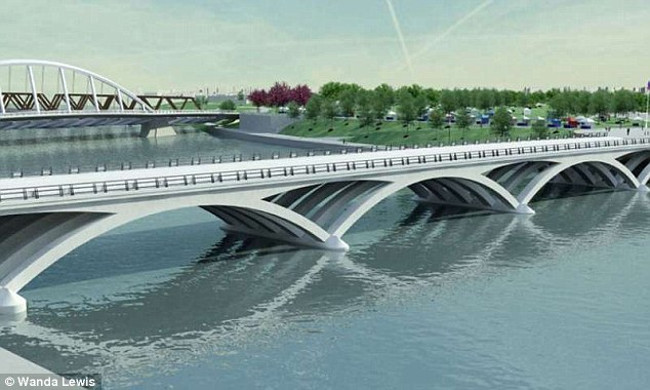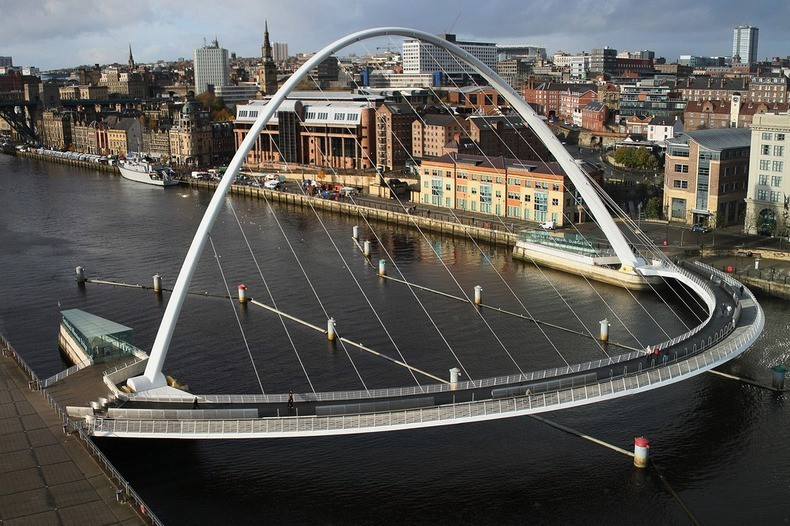Researchers believe that this arched bridge architecture is the most sustainable in the world
What construction method can a building architecture be so stable? Listen to researchers from Warwick University.
Construction experts say they have built a "perfect" bridge that can withstand anything Mother Nature bounces on them.
The bridge designer is a researcher at the University of Warwick, saying that they are keeping an important element in this new design, a design- making cycle to create a Architectural structure has no weaknesses.

The bridge was designed by researchers at the University of Warwick to "have no weaknesses".
This may for the first time lead to future road and bridge designs that can withstand large loads and may also "have no weaknesses " like the other bridge. These buildings will have a higher safety, more durable with time and maintenance and maintenance will be minimized.
" The natural physical design cannot be matched with this technical design , " said Professor Wanda Lewis of Warwick University of Technology. " The aesthetic problem is very important in any design, so we have looked at many different shapes to create an effective bridge design that is very eye-catching . "
For 25 years, Professor Lewis studied different shapes in nature: it could be as simple as the shape of trees or leaves or just the curve of a shell. Of all these natural things, Professor Lewis found that they all had a particularly resistant pattern , which made them able to withstand great force without being harmed, the way a tree Can withstand wind under a certain intensity.

Gateshead Millennium Bridge crosses the Tyne River.
To do that, Professor Lewis developed an algorithm based on natural design standards and tested his own bearing patterns for each building. The design standard is based on actual physical tests of bearing, such as testing on a cloth or a chain. The test objects were placed under great pressure, then returned to their original state, then the state was "frozen ", becoming a more upside-down, more rigid shape.
Professor Lewis found the exact coordinates of this shape by calculating the simulated gravitational effects placed on them. The final product will be a natural shape, will be able to withstand great force very easily.
- The bridges have impressive architecture
- Impressive bridges in the world
- The bridge 'engraved, carved out' is like magic
- 6 beautiful and exotic bridges in the world
- 11 longest sea crossing bridges in the world
- The bridge of architectural masterpieces of the world
- 13 beautiful fairy-like bridges worth admiring around the world
- The mystery of ancient Roman masterpieces makes modern Europe
- 10 impressive suspension bridges in the world
- The most frightening and attractive bridges on the planet
- China is the tallest bridge in the world
- The most 'naked' bridge in the world
 'Fine laughs' - Scary and painful torture in ancient times
'Fine laughs' - Scary and painful torture in ancient times The sequence of numbers 142857 of the Egyptian pyramids is known as the strangest number in the world - Why?
The sequence of numbers 142857 of the Egyptian pyramids is known as the strangest number in the world - Why? History of the iron
History of the iron What is alum?
What is alum? NASA engineer surprised by 'alien' shape of AI-made spacecraft components
NASA engineer surprised by 'alien' shape of AI-made spacecraft components  Double-decker supersonic plane can carry 500 passengers
Double-decker supersonic plane can carry 500 passengers  Take inspiration from polar bears to create a one-of-a-kind shelter
Take inspiration from polar bears to create a one-of-a-kind shelter  Drone follows Leonardo da Vinci's 530-year-old design
Drone follows Leonardo da Vinci's 530-year-old design  China researches supersonic aircraft 5 times faster than the speed of sound
China researches supersonic aircraft 5 times faster than the speed of sound  6 inventors are famous for things they never invented
6 inventors are famous for things they never invented 